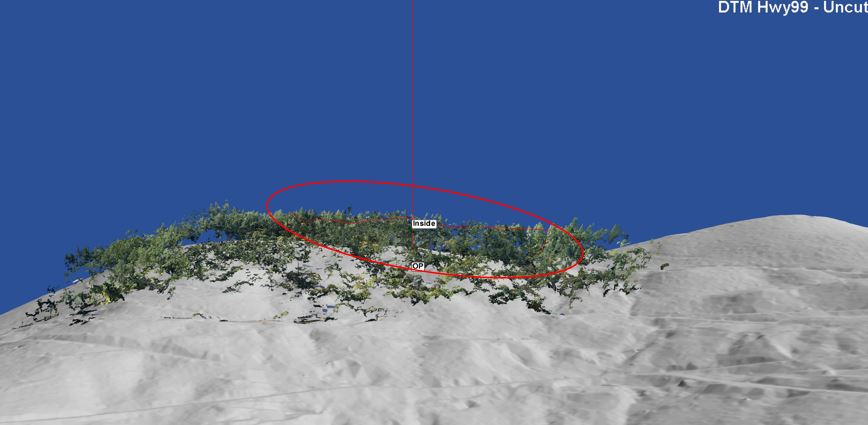To ensure thoughtful and sustainable management of the McDonald and Dunn research forests, the Oregon State University Research Forests uses a combination of techniques to design and simulate harvests and other silvicultural treatments before cutting to ensure the harvest meets objectives, particularly from a viewshed perspective.
“One reason our neighbors live near the forest and in the Vineyard Mountain neighborhood is that it is beautiful up here,” says Stephen Fitzgerald, director of the OSU Research Forests. “We wanted to maintain the surrounding aesthetics as much as possible with this harvest so that it is less noticeable from afar. We also have high-use recreation trails in the harvest unit we had to consider. To design this harvest with aesthetics in mind, we used innovative techniques to design the pattern of leave trees in this highly visible area.”
In 2020, Fitzgerald, forest manager Brent Klumph, associate professor of forest engineering Bogdan Strimbu, graduate student Bryan Begay, and forestry student workers employed a three-phase technique to plan harvests when there are potential viewshed impacts. This project was part of Begay’s larger master’s research project exploring aesthetic silviculture. This three-phase technique includes using GPS to pinpoint tree location followed by LIDAR, which stands for Light Detection and Ranging and is a remote sensing method that uses light in the form of a pulsed laser to reconstruct a digital version of the forest or area in question. The final phase involves walking the forest floor. The team first employed this process within the Davie Crocket II forest, a “variable retention harvest” located near the top of Vineyard Mountain in Corvallis.
“The Davie Crocket II harvest area encompasses the well-used Vineyard Mountain recreation trail, which we wanted to protect,” explains Fitzgerald. “First, we identified and GPS’d trees along and adjacent to the trail that we wanted to retain. Second, we marked and GPS’d additional trees to be retained either singularly or in clumps across the rest of the harvest area while also creating gaps and openings. Then all of the GPS’d trees were put into LIDAR so that we could see where they were and could then look up at the harvest area (as if it was harvested showing the retained trees) from distant viewpoints around Corvallis.”

Being able to view what the harvest might look like before it is harvested from different vantage points from afar allows Fitzgerald and his team to add or subtract trees within the harvest area. For example, Fitzgerald explains, the proposed harvest area was evident from Highway 99 near Lewisburg, and they did not want the harvest to stand out from an aesthetic perspective.

The final step of walking the forest floor with boots on the ground and eyes on the trees and their spatial arrangement allows Fitzgerald and his team to view the tree canopy and make any final adjustments.


“By walking within and along the 500 Road, which borders the harvest unit, we were able to determine, mark and GPS additional trees to leave from a view and aesthetic perspective as you were hiking or biking by,” Fitzgerald says.

The logging contractor, Drew Marshall, recently received the 2021 Certificate of Merit through the Oregon Department of Forestry (ODF) for his excellent work and eye for detail. The award recognizes those forest practices operators that ‘go the extra mile’ for protecting Oregon’s natural resources while working in the forest.

